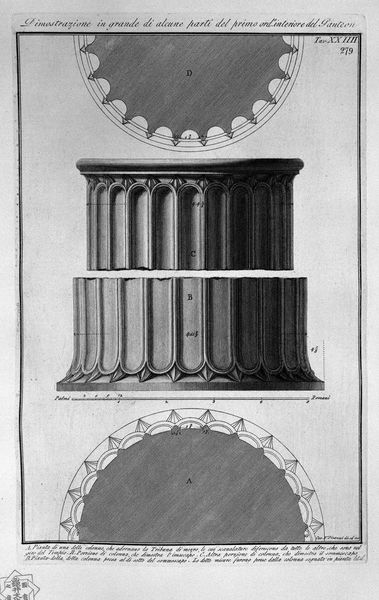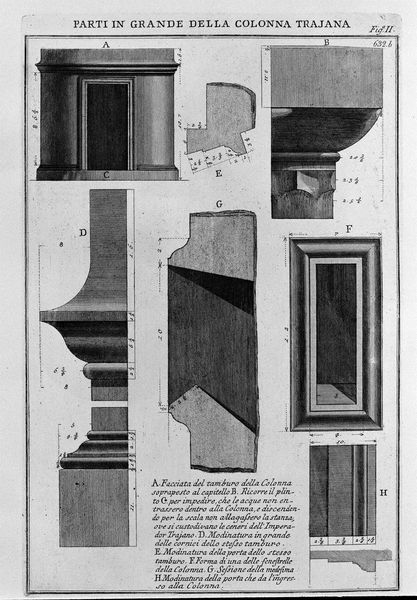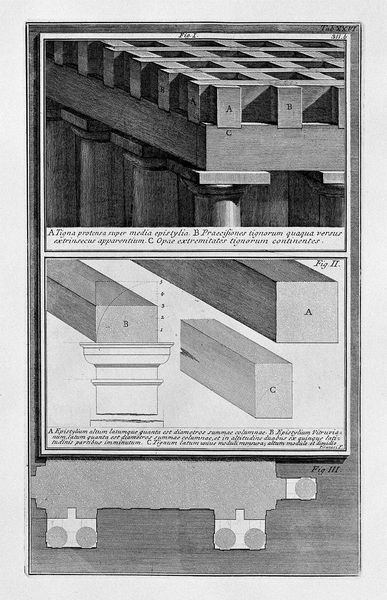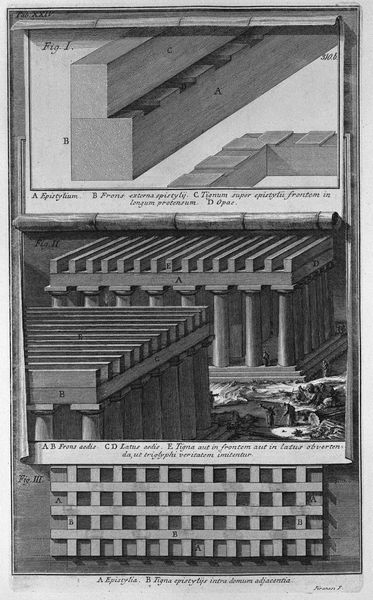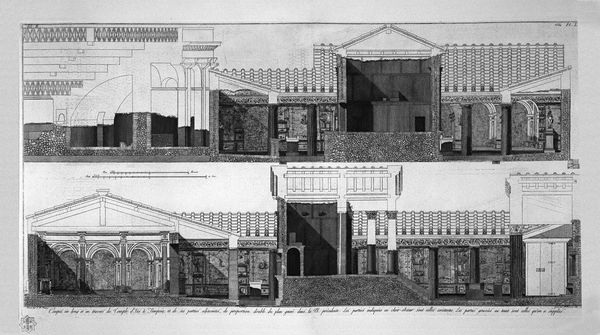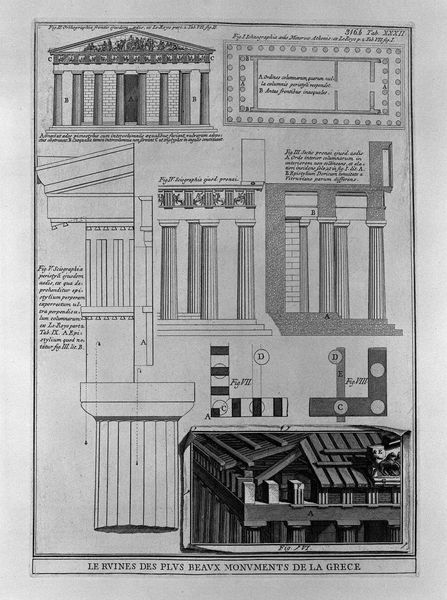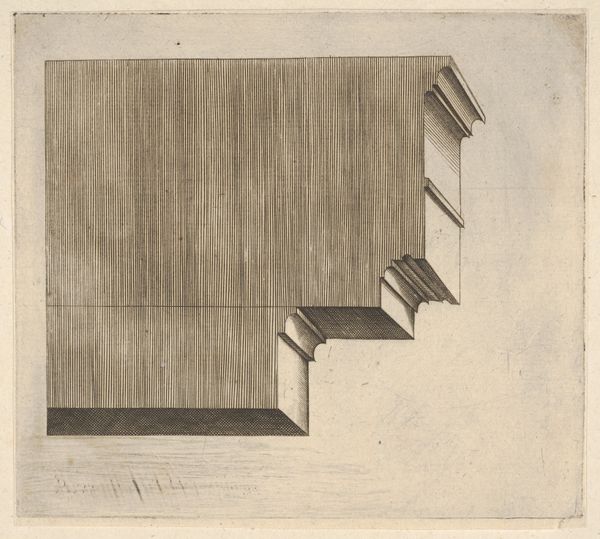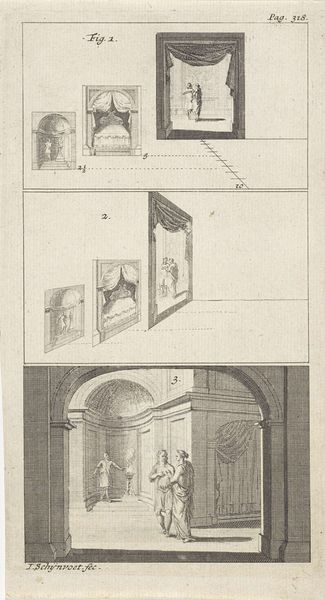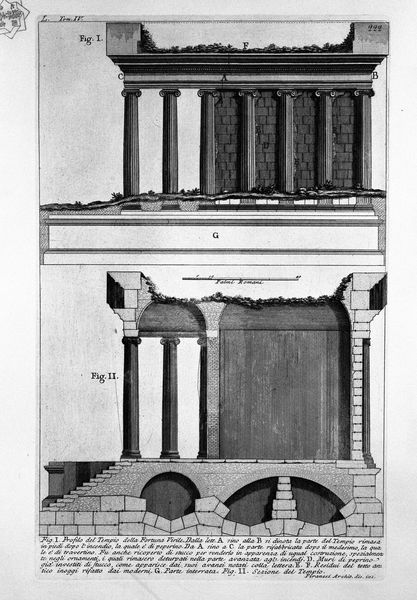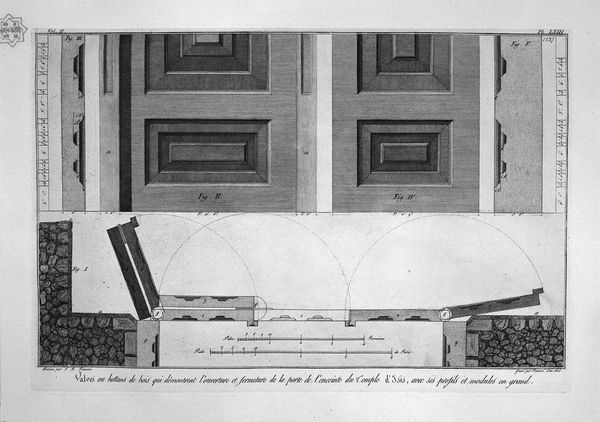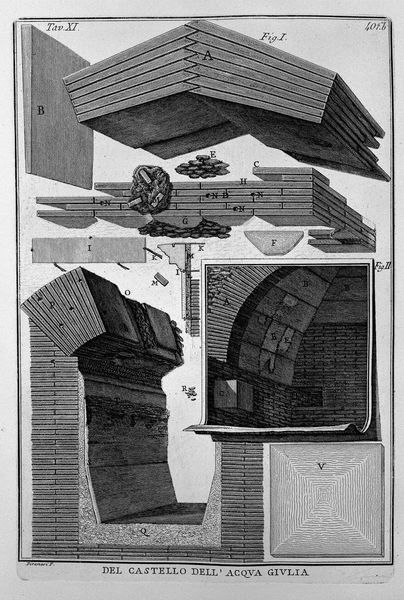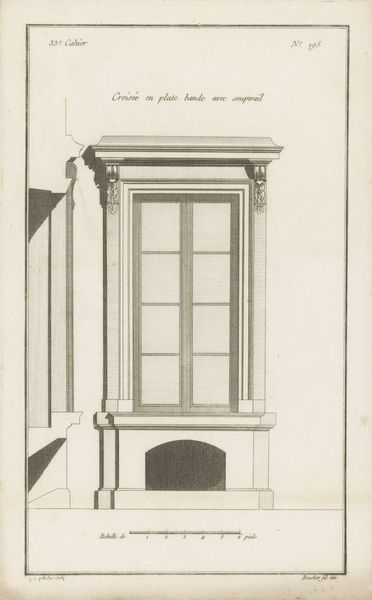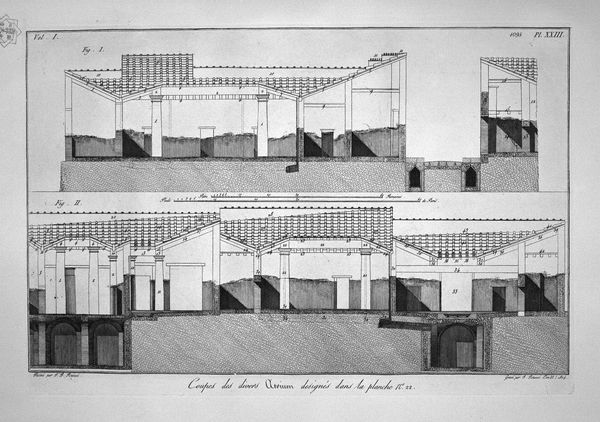
La Perspective Pratique. Seconde Edition. Part I, II, and III 1679
0:00
0:00
drawing, print, engraving, architecture
#
architectural sketch
#
drawing
# print
#
book
#
architectural plan
#
architectural design
#
perspective
#
architectural form
#
architectural concept
#
geometric
#
france
#
elevation plan
#
architectural section drawing
#
architectural drawing
#
architecture drawing
#
architectural proposal
#
engraving
#
architecture
Copyright: Public Domain
Curator: This drawing, “La Perspective Pratique. Seconde Edition. Part I, II, and III,” was created in 1679 by Jean Dubreuil. It’s a fantastic example of the architectural engravings being produced at the time, focusing on perspective. What's your first take on it? Editor: Stark, almost unsettling in its clarity. That rigorously gridded floor leading to an almost featureless doorway... it evokes a sense of infinite potential, but also, let’s be honest, a touch of existential dread. Like stepping into a meticulously rendered void. Curator: That's interesting. I find that the void, as you call it, invites the viewer to fill the space with their own imaginings. For example, it feels as if there is stage being set and the characters will shortly emerge. The geometric structure gives permission to dream. What symbols do you interpret from the visual language? Editor: Geometry itself carries weight. Grids, historically, symbolize order, control, a triumph over nature's chaos. That doorway at the vanishing point could symbolize any portal--but that feels a bit easy here, it is probably a doorway. Yet here it could equally signify possibilities within architecture and learning through design. Curator: A kind of enforced or instilled idea that through the study of architecture an individual finds enlightenment? Is that it? And notice the strong, repetitive horizontals of the exposed ceiling beams—the architectural bones—it is like you can almost see what binds our interior thoughts to external design? Editor: Precisely! Think of the emotional impact that repetitive structure. Like looking up at a framework, something akin to societal architecture or the human rib cage. Dubreuil isn't just showing us *how* to draw perspective; he’s showing how perspective and geometry fundamentally construct our world views. The perspective offers a feeling, or an ideal, about perfection; that with geometry one can create perfection. Curator: Yes, there’s a cerebral quality. Perhaps the cold reading reflects a deep trust in scientific precision during a burgeoning Age of Reason? But I’m compelled by how its simple austerity ignites thought. Thanks to Dubreuil’s craft, we now engage with the world not just as artists, but as explorers of the mind. Editor: I am inclined to agree; the Age of Reason must have seemed terribly fraught without emotion. To engage as an artist, one would naturally lean on reason as something concrete.
Comments
No comments
Be the first to comment and join the conversation on the ultimate creative platform.
